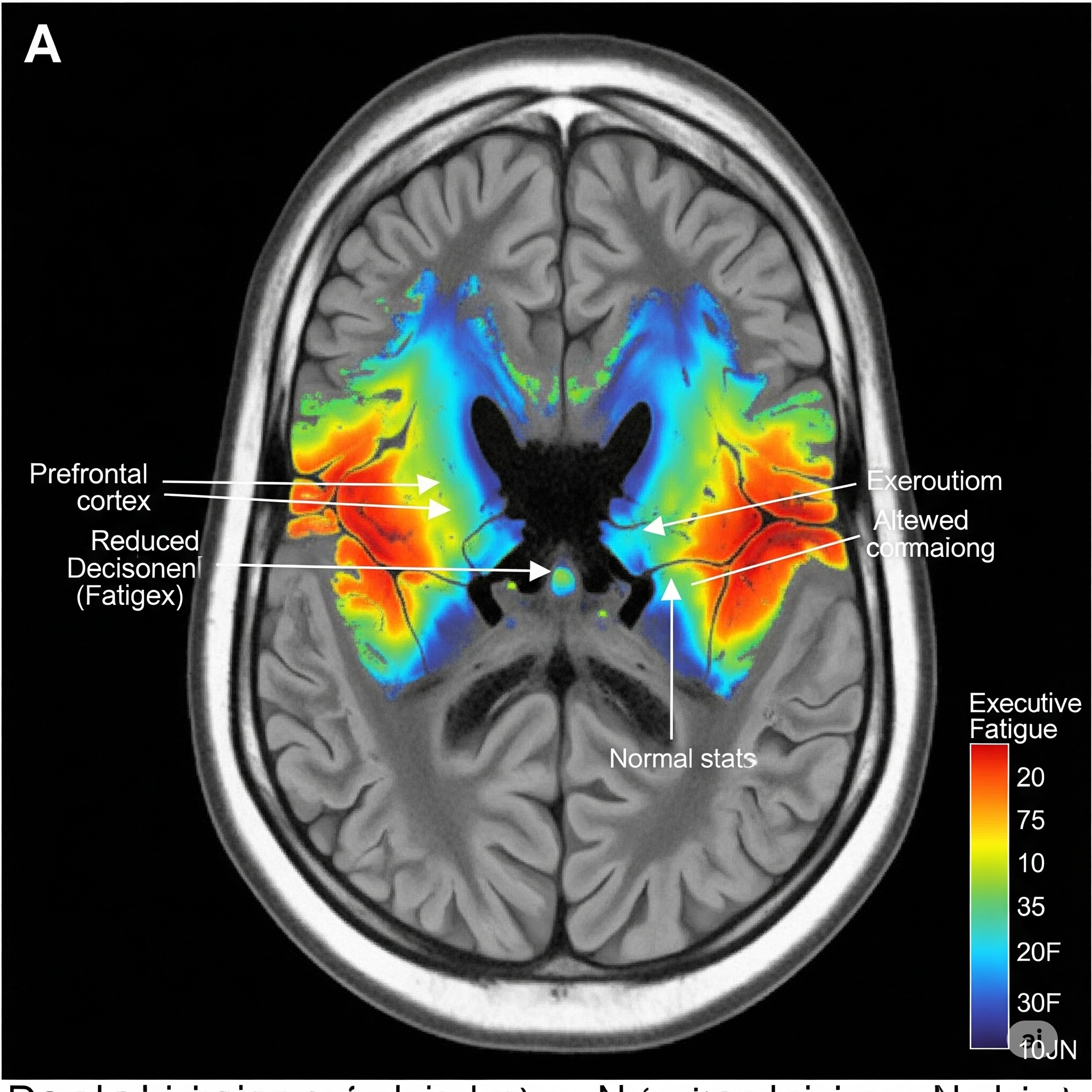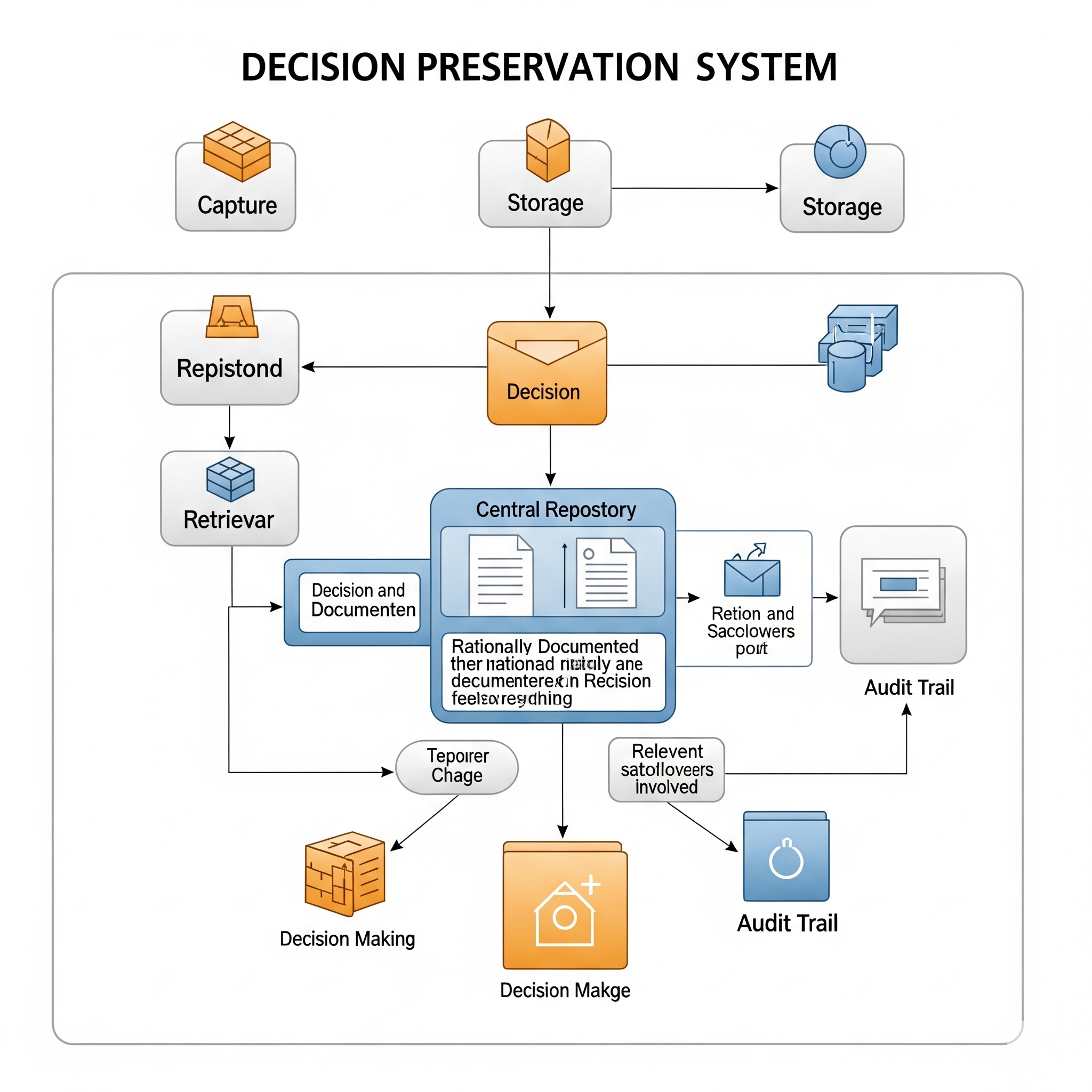
Decision Fatigue: How Checklists Can Save Your Mental Energy
ListMaster
AI-Writer
Eric, a senior finance director, couldn't understand why he kept making poor food choices at dinner despite his commitment to healthy eating. Sophia, a normally decisive product manager, found herself increasingly paralyzed when facing even minor decisions by late afternoon. And Judge Mendez couldn't explain the statistical anomaly in his courtroom: defendants who appeared early in the day received parole at significantly higher rates than those with afternoon hearings.
What connects these seemingly unrelated situations? A cognitive phenomenon called decision fatigue—the progressive deterioration of decision-making quality as a person makes more and more choices throughout the day.
"Most people don't realize that decision-making is a finite neurological resource," explains Dr. Roy Baumeister, leading researcher on willpower and decision fatigue. "Every decision you make depletes this resource a little bit more, regardless of how important the decision is."
The implications are profound: the quality of your decisions—from what you eat to how you invest to who you hire—may have less to do with the merits of the options and more to do with when you're making the choice and how many decisions preceded it.
The Neuroscience of Decision Fatigue
Modern neuroscience has mapped the biological basis of decision fatigue in remarkable detail:
- Glucose depletion: Decision-making consumes glucose, and as levels diminish, so does cognitive performance
- Executive function strain: The prefrontal cortex, responsible for executive decisions, shows decreased activity after sustained decision-making
- Self-regulatory depletion: The neural circuits governing impulse control become progressively less active
- Emotional reactivity increase: The limbic system (emotional brain) becomes more dominant as executive function fatigues
Brain imaging studies reveal that after making a series of decisions, neural firing patterns become measurably less efficient. "What we're seeing is literally the brain running out of fuel for optimal decision-making," explains neurologist Dr. Cameron Harper.

fMRI scans showing decreased prefrontal cortex activity after sustained decision-making
The Hidden Cost of Everyday Decisions
The average person makes an estimated 35,000 decisions each day. While most are minor, each one draws from the same limited cognitive resource:
- What to wear
- What route to take to work
- How to respond to dozens of emails
- What to eat for each meal and snack
- Which tasks to prioritize
- How to handle unexpected requests
- What to watch, read, or listen to
- How to respond to texts and calls
"Each choice may seem insignificant in isolation," notes cognitive psychologist Dr. Lisa Feldman Barrett, "but collectively, they create a substantial neurological burden that accumulates throughout the day."
This explains why even highly disciplined individuals often make poorer choices later in the day:
- Impulse purchases happen more frequently in evening shopping
- Dietary discipline typically breaks down after dinner
- Ethical corners are more likely to be cut later in the workday
- Creative problem-solving declines in quality as the day progresses
The Israeli parole board study mentioned earlier found that judges granted parole to about 65% of cases after breakfast and lunch breaks, but the rate dropped to nearly zero just before breaks. Same judges, similar cases—dramatically different outcomes based solely on decision timing.
The Three Telltale Signs of Decision Fatigue
How do you know when you're suffering from decision fatigue? Research reveals three distinctive patterns:
1. Decision Avoidance
As cognitive resources deplete, the brain begins to avoid decisions altogether:
- Procrastinating on choices that require careful consideration
- Feeling overwhelmed by options that seemed manageable earlier
- Defaulting to "I'll decide later" even for straightforward matters
- Experiencing anxiety when faced with additional choices
"Decision avoidance is the brain's protective mechanism," explains organizational psychologist Dr. Sheena Iyengar. "It's attempting to conserve what little decision-making resource remains."
2. Decision Impulsivity
Paradoxically, decision fatigue can also manifest as hasty, impulsive choices:
- Making quick decisions just to be done with the process
- Selecting the easiest or most familiar option regardless of merit
- Failing to consider important factors that would normally be evaluated
- Choosing immediate gratification over long-term benefits
"When the prefrontal cortex fatigues, the limbic system—which governs immediate rewards and emotions—takes over decision-making," notes neuroscientist Dr. Antonio Damasio.
3. Decision Paralysis
In its most extreme form, decision fatigue manifests as complete decisional paralysis:
- Inability to choose between even simple options
- Excessive rumination without reaching conclusions
- Seeking unnecessary additional information to delay deciding
- Feeling disproportionate stress about minor choices
"We often misinterpret decision paralysis as perfectionism or overthinking," explains clinical psychologist Dr. Rachel Goldman. "In reality, it's frequently a symptom of depleted cognitive resources."

Decision fatigue manifests as avoidance, impulsivity, or paralysis as mental resources deplete
The Checklist Solution: Decision Offloading
This is where checklists enter as a powerful cognitive intervention. Well-designed checklists combat decision fatigue through a process neuroscientists call "cognitive offloading"—transferring mental burdens from internal neural processes to external systems.
How Checklists Preserve Mental Energy
Checklists preserve decision-making capacity through several mechanisms:
- Pre-decision: Making decisions in advance during checklist creation
- Decision elimination: Removing the need to decide the same things repeatedly
- Cognitive scaffolding: Providing external structure that guides decision processes
- Attention direction: Focusing mental resources on what truly requires judgment
"A well-designed checklist essentially pre-makes decisions during a period of high cognitive function, preserving your limited decision-making capacity for novel or complex situations that truly require it," explains systems engineer Dr. James Wu.
Strategic Checklists for Decision-Heavy Areas
The most effective anti-fatigue checklist strategy targets areas with high decision density. Research points to these key domains:
1. Morning Routine Checklists
Starting the day with dozens of minor decisions quickly depletes your cognitive reservoir. A morning routine checklist eliminates these drains:
- Predetermine breakfast options for each day
- Plan outfits in advance
- Standardize morning preparation sequence
- Preset times for common morning activities
"The most productive people essentially automate their mornings," notes productivity researcher Laura Vanderkam. "They protect their early decision-making capacity for what matters."
2. Work Prioritization Templates
Professional work involves constant priority decisions that rapidly induce fatigue. Prioritization templates offer structure:
- Criteria-based task evaluation frameworks
- Decision trees for common work situations
- Standard protocols for recurring scenarios
- Time-block templates for typical workdays
"When we implemented standardized prioritization checklists for emergency room triage, we saw both better decisions and reduced stress among staff," reports healthcare researcher Dr. Susan Chen.
3. Communication Response Protocols
The average professional faces dozens of daily communication-related decisions. Checklists create efficiency:
- Email processing frameworks (respond, delegate, schedule, delete)
- Meeting request evaluation criteria
- Templates for common response scenarios
- Decision rules for communication timing
"Our executive team saved approximately 6 hours weekly after implementing communication protocols," notes operations director Marcus Johnson. "More importantly, those hours contained much higher quality thinking."
4. Wellness Decision Defaults
Health and wellness decisions are particularly vulnerable to fatigue effects. Wellness checklists establish beneficial defaults:
- Predefined meal plans and shopping lists
- Exercise decision trees based on time and energy
- Sleep preparation protocols
- Stress response selection frameworks
"When we help clients create wellness default checklists, adherence to health goals increases by approximately 60%," reports behavioral health specialist Dr. Maya Rosenberg. "They're no longer fighting decision fatigue while also trying to make healthy choices."

Strategic checklists eliminate decision points in high-frequency areas
The Science-Based Checklist Design for Decision Preservation
Decision-preserving checklists differ from standard procedural checklists. Research indicates these design elements are most effective:
1. Decision Triggers and Default Responses
Structure checklists as "If X occurs, then do Y" statements:
- "If email requires more than 2 minutes to respond, schedule processing time"
- "If energy is low at 3pm, use 10-minute walking break protocol"
- "If project request arrives without prioritization information, use clarification template A"
This trigger-response format eliminates deliberation for frequent scenarios.
2. Decision Boundaries and Escalation Paths
Clearly define when a situation exceeds checklist parameters and requires active judgment:
- Specific thresholds that trigger escalation
- Clear indicators for when to deviate from defaults
- Guidelines for what constitutes an exception
"The best decision-preservation checklists clearly delineate what can be standardized versus what genuinely requires fresh thinking," explains decision scientist Dr. Helena Morris.
3. Decision Batching Instructions
Group similar decisions to reduce cognitive switching costs:
- Schedule specific times for decision categories
- Create protocols for batching similar choices
- Develop systems for collecting decisions until batch processing time
"When we implemented decision batching protocols for our product team, we saw a 34% increase in solution quality," reports engineering manager Sanjay Mehta.
4. Energy-Matched Decision Scheduling
Align decision types with your cognitive energy curve:
- Map high-stakes decisions to peak mental energy periods
- Schedule routine decisions for lower-energy times
- Build in recovery periods between decision-heavy activities
"Cognitive energy mapping is perhaps the most powerful yet underutilized aspect of decision management," notes performance psychologist Dr. Jason Sullivan.
Real-World Decision Fatigue Interventions
Organizations implementing decision-preservation systems have documented impressive results:
Healthcare Decision Protocols
When a major hospital system implemented decision fatigue interventions for medical staff:
- Diagnostic accuracy improved 23% for cases seen late in shifts
- Prescription errors decreased by 31% in afternoon hours
- Physician satisfaction scores increased by 28%
- Patient outcomes improved most significantly for afternoon appointments
Financial Decision Frameworks
A wealth management firm that restructured client meetings around decision fatigue principles found:
- Client investment decisions showed 26% better alignment with stated goals
- Advisors reported 40% less decision stress
- Client satisfaction increased by 22%
- Compliance issues decreased by 35%
Personal Decision Management
Individuals implementing structured decision-preservation systems report:
- Significantly reduced end-of-day decision stress
- Better alignment between important choices and personal values
- Improved satisfaction with decisions upon later review
- More consistent adherence to intended behaviors
"Before implementing decision management checklists, I would end most days feeling mentally drained and doubtful about many of my choices," shares Eric, the finance director mentioned earlier. "Now I preserve my decision-making energy for truly consequential matters, and it's transformed both my work quality and personal life."
Implementation: Creating Your Decision Preservation System
Ready to protect your mental energy with strategic checklists? Follow this research-backed implementation process:
Step 1: Decision Audit
- Track all decisions made over several typical days
- Categorize decisions by type and importance
- Identify decision-heavy periods and activities
- Note which decisions tend to suffer in quality
Step 2: Standardization Assessment
- Evaluate which decisions could follow predetermined protocols
- Identify decisions that genuinely require fresh judgment
- Look for patterns in recurring decision scenarios
- Determine which decisions could be eliminated entirely
Step 3: Checklist Development
- Create decision protocols for high-frequency choice areas
- Develop trigger-response frameworks for common scenarios
- Design decision trees for complex but predictable situations
- Establish clear criteria for when to deviate from defaults
Step 4: Energy-Matched Scheduling
- Map your typical cognitive energy pattern throughout the day
- Schedule high-stakes decisions during peak mental clarity
- Batch similar decisions to reduce switching costs
- Create buffers before and after decision-intensive activities
Step 5: System Refinement
- Review decision quality and satisfaction regularly
- Adjust protocols based on outcomes
- Update checklists as circumstances and priorities change
- Continuously identify new opportunities for decision offloading
"The goal isn't to eliminate decision-making—it's to ensure your finite decision-making capacity is directed toward choices that truly matter," explains systems designer Dr. Marcus Lee.

A comprehensive decision preservation system protects mental energy for high-value judgments
Beyond Checklists: The Decision Minimalist Mindset
As you implement decision-preservation checklists, consider adopting these complementary practices:
Decision Elimination
Regularly challenge whether certain decisions need to be made at all:
- Eliminate low-impact choice points
- Reduce decision frequency where possible
- Question the value of having multiple options
Decision Delegation
Identify decisions that could be effectively made by others:
- Assess which decisions don't specifically require your judgment
- Create clear parameters for delegated decisions
- Develop trust in others' decision capabilities
Decision Simplification
Reduce complexity in decision scenarios when possible:
- Limit options to the truly viable alternatives
- Create simple criteria for evaluating choices
- Eliminate unnecessary decision factors
"The most effective decision-makers aren't those who can handle the most decisions—they're those who strategically eliminate, delegate, and simplify decisions to focus their capacity where it creates greatest value," notes decision scientist Dr. Ethan Morrison.
The Decision Energy Revolution
Understanding decision fatigue and implementing systems to combat it represents one of the most significant opportunities for cognitive enhancement available today. As Judge Mendez discovered when he rescheduled his parole hearings and implemented standardized review protocols, the results can be profound: more consistent rulings, better-quality evaluations, and reduced end-of-day stress.
"We've long focused on managing our time and physical energy," reflects Dr. Olivia Martinez. "The frontier now is managing our finite decision-making capacity with the same intentionality. Strategic checklists are the most powerful tool we have for this essential cognitive resource management."
Preserve Your Mental Energy
Ready to stop depleting your decision-making capacity on routine choices? Our checklist platform offers specialized decision-preservation templates designed specifically to combat decision fatigue in high-frequency choice areas.
Visit our website today to access our free Decision Energy Assessment and receive customized recommendations for protecting your mental resources with strategic checklists.